Irma Smashes Turks And Caicos; Category 4 Storm On Its Way To Florida
By Bill Chappell, Scott Neuman

Irma Smashes Turks And Caicos; Category 4 Storm On Its Way To Florida
By Bill Chappell, Scott NeumanUpdated at 12:01 p.m. ET
Hurricane Irma slammed through the Turks and Caicos Islands en route to a destructive encounter with Florida this weekend. It began hitting Cuba and the Bahamas with hurricane conditions Friday morning. Although the storm has been downgraded slightly, it remains a massively powerful and “extremely dangerous” system, forecasters say.
Irma’s dangerous “eye wall,” where winds of 150-mph are swirling, is threading its way through the gap between Cuba and the Bahamas as it heads toward Florida. At 11 a.m. ET Friday, the storm was about 405 miles southeast of Miami and moving at 14 mph.
The extent of the damage to the low-lying Turks and Caicos island chain, located just east of the Bahamas, still isn’t clear. The islands’ emergency management agency issued warnings that the main 911 call center was down. Forecasters predicted Irma would hit the area with powerful winds and waves as high as 20 feet.
The National Hurricane Center downgraded Irma a notch from the most severe Category 5 ranking to Category 4 in bulletins Friday morning. Winds that screamed through the Caribbean at up to 185 mph, turning houses to ruin and killing more than a dozen people, have since fallen to 150 mph, the NHC said.
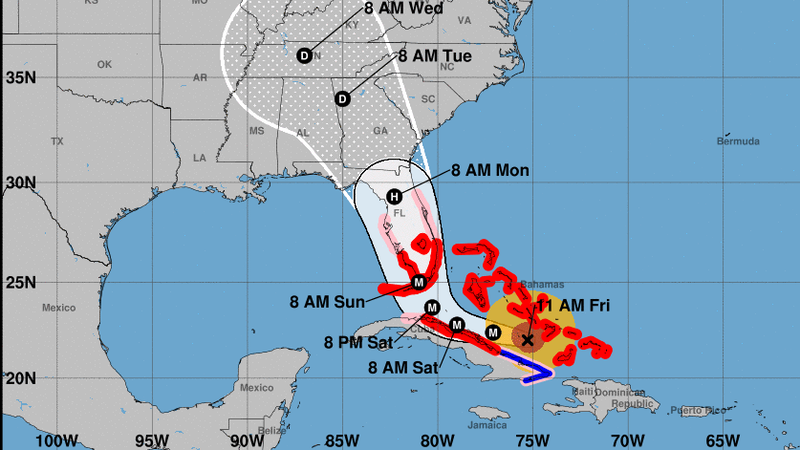
Florida girds for Irma
In Florida, Gov. Rick Scott is expected to order mandatory evacuations for southern parts of the state on Friday. Residents have been bracing for days for a head-on collision with the massive storm. The first official hurricane warnings have been issued for southern Florida.
At a news briefing early Friday, Federal Emergency Management Agency Administrator Brock Long warned that parts of Florida could be without electricity for days or weeks and that more than 100,000 people in the state may require shelter.
“Hurricane Irma continues to be a threat that is going to devastate the United States in either Florida or some of the southeastern states,” he said.
Florida Power & Light CEO Eric Silagy said Friday that given Irma’s current strength and path, the storm is likely to impact 4.1 million electricity customers — or some 9 million people, NPR’s Greg Allen reports.
Irma’s strong winds put it near the upper limit of a Category 4 hurricane on the Saffir-Simpson wind scale. Describing what areas hit by such a storm can expect to experience, the hurricane center says, “Well-built framed homes can sustain severe damage with loss of most of the roof structure and/or some exterior walls. … Most of the area will be uninhabitable for weeks or months.”
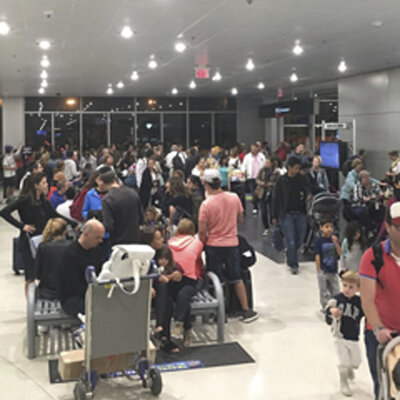
Hurricane and storm surge warnings have been issued for a large chunk of Florida’s peninsula, from Sebastian Inlet on the east coast down to the Florida Keys and around to Venice on the west coast. Some areas could see a surge of 6 to 12 feet. Hurricane warnings are also in effect for Lake Okeechobee and Florida Bay.
Irma, which is one of the most powerful hurricanes ever recorded in the Atlantic, is set to barrel between the northern coast of Cuba and the southern Bahamas on its way toward Florida.
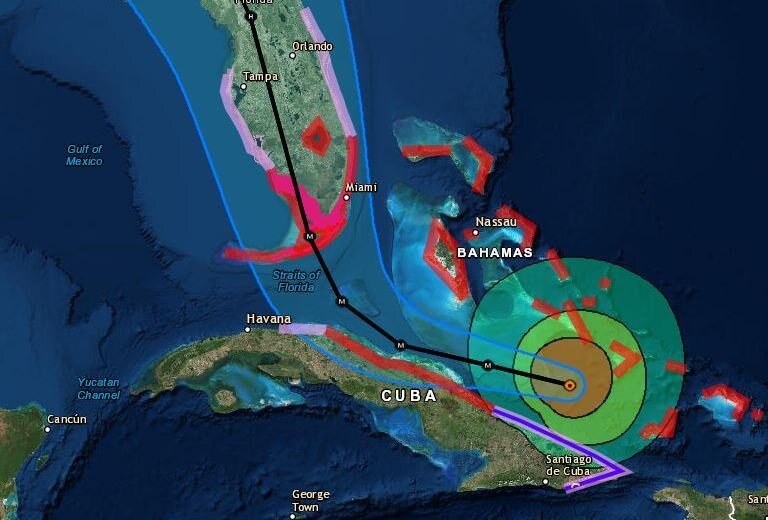
Hurricane-force winds extend up to 70 miles from its center, and tropical-storm-force winds up to 185 miles outward.
Forecasters believe the storm will begin to turn northwest by late Saturday and make landfall as “at least a Category 4 hurricane” in the Florida Keys by around 2 a.m. Sunday. Earlier this week, the predicted track was for Irma to hug the East Coast, but the latest forecast from the NHC has the storm bisecting Florida as it moves toward Georgia.
“After landfall, a fairly quick decay in maximum winds is expected due to land interaction and increased shear,” the hurricane center says, “although Irma’s large wind field is likely to still produce hurricane-force winds over a large area.”
Referring to the shifting predictions on the storm’s path, Long said, “Anybody from Alabama to North Carolina should be watching this storm very closely.”
Wreckage in the Caribbean
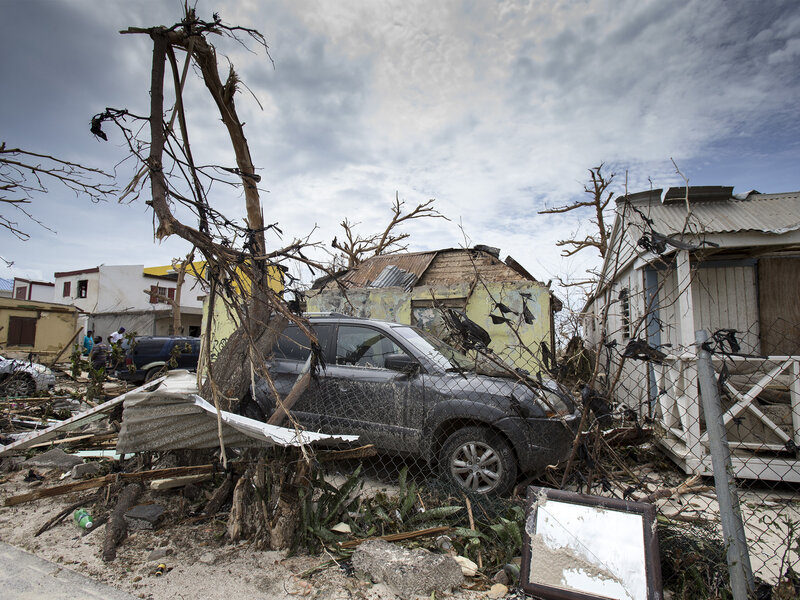
On Thursday, Irma skirted just north of Hispaniola, an island split between the Dominican Republic and Haiti, sparing those countries the full force of its winds and storm surge.
Earlier, Irma had also passed to the north of Puerto Rico, knocking out electricity to more than a million people in the U.S. territory. The island’s fragile infrastructure is expected to present a major challenge, and authorities say it could be months before power is restored to some rural areas.
Two outlying Puerto Rican islands, Vieques and Culebra, got hit hardest. NPR’s Jason Beaubien, reporting from San Juan, says those islands got hit “incredibly hard” and that the territory’s governor, Ricardo Rosselló, declared them a disaster.
“People there say the destruction was like the end of the world,” Jason says.
Several other Caribbean islands, including Barbuda, St. Martin/Sint Marteen, Anguilla and the Virgin Islands, were not so lucky. The level of destruction on some has been described as nothing short of apocalyptic. And Hurricane Jose, another major storm close on the heels of Irma, is forecast to hit some of the same islands on Saturday before veering north.
The U.S. Consulate General in Curaçao says that it believes about 6,000 Americans are stranded on St. Martin and that it was working with the U.S. and other governments to try to get them to safety.
“We are exploring every possible option to assist U.S. citizens there,” a State Department official tells NPR. “However, there is no U.S. Consulate on the island, and we currently cannot access the island.”
At least four people are dead in the U.S. Virgin Islands, and officials there said they expect to find more bodies. Dozens of patients were rescued from a destroyed hospital on the main island of St. Thomas to neighboring St. Croix and Puerto Rico. A pair of Air Force C-130s were flying in supplies to the stricken islands.
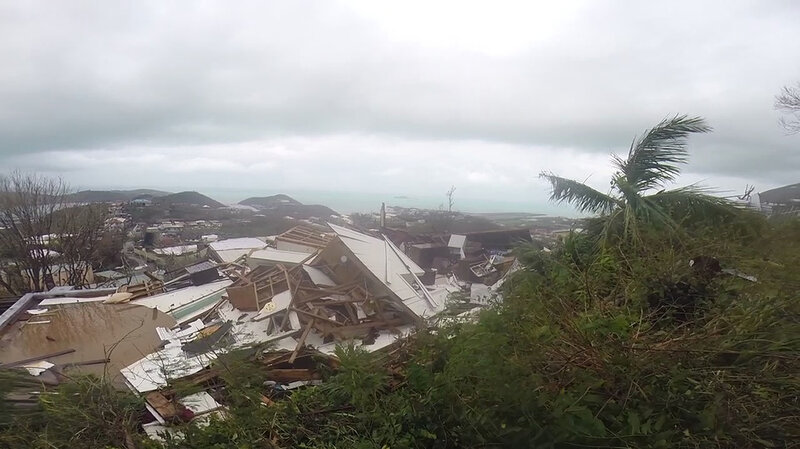
U.S. Virgin Islands Gov. Kenneth Mapp imposed a 6 p.m. curfew, saying the focus is on “making sure people have meals, water and shelter.” He called the magnitude of the storm “very chilling.”
At least one person, a toddler, was killed in Barbuda, where officials said nearly every building was damaged or destroyed.
On severely damaged St. Martin, which is half-governed by France and half by the Netherlands, Dutch forces were helping maintain order and distributing aid, according to The Associated Press.
The news agency says Dutch Prime Minister Mark Rutte had told reporters Friday that the first planeload of relief aid had landed and that Dutch navy ships were also unloading supplies.
French Interior Minister Gérard Collomb said a total of nine people have been confirmed dead on French-administered islands, and seven more are missing. Collomb says supplies and relief workers are being rushed to the area ahead of Jose’s predicted arrival Saturday.
In French St. Martin, there were reports of looting as military planes transported in police and rescue crews, the AP says.
A massive evacuation was ordered for islands in the southeast of the Bahamas chain. The Tourism Ministry in the Bahamas said thousands of tourists have left ahead of Irma’s arrival. The storm has already passed over or near the outer islands of Great Inagua and Mayaguana, but the extent of damage there isnt yet clear.
Cuban residents on the northern coast were under a mandatory evacuation order and thousands of tourists were evacuated from low-lying keys off the Cuban coast on Thursday in anticipation of the storm surges, according to the AP.
Copyright 2017 NPR. To see more, visit http://www.npr.org/.
9(MDI4ODU1ODA1MDE0ODA3MTMyMDY2MTJiNQ000))
